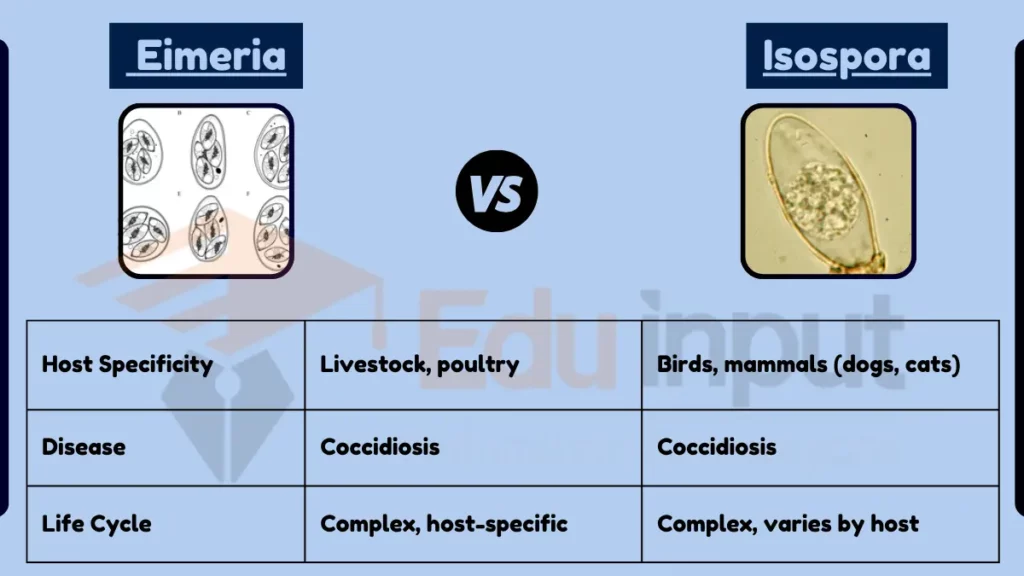Difference Between Eimeria and Isospora
Key Difference
Eimeria and Isospora are both genera of protozoan parasites, but they differ in their host specificity and disease manifestation. Eimeria primarily infects various vertebrates, including poultry and livestock, causing coccidiosis, which can lead to severe gastrointestinal issues. Isospora infects a broader range of hosts, including birds and mammals (notably dogs and cats), and its infection can result in coccidiosis with symptoms like diarrhea and weight loss.

Comparative Analysis
- Host Specificity:
- Eimeria: More specific, primarily infects livestock and poultry.
- Isospora: Broader host range, including birds, dogs, and cats.
- Disease Caused:
- Both cause coccidiosis but in different hosts.
- Life Cycle:
- Eimeria: Complex life cycle, highly host-specific.
- Isospora: Similar life cycle, but with variations across different hosts.
- Impact on Host:
- Eimeria: Can be particularly severe in poultry, leading to economic losses in agriculture.
- Isospora: Often causes milder symptoms in pets but can be severe in immunocompromised animals.
- Diagnosis and Treatment:
- Both require microscopic examination for diagnosis.
- Treatment involves anti-parasitic medications, but strategies differ based on the specific host and parasite.
Table Summary
| Feature | Eimeria | Isospora |
|---|---|---|
| Host Specificity | Livestock, poultry | Birds, mammals (dogs, cats) |
| Disease | Coccidiosis | Coccidiosis |
| Life Cycle | Complex, host-specific | Complex, varies by host |
| Host Impact | Severe in agriculture | Milder in pets, severe in immunocompromised |
| Diagnosis/Treatment | Microscopic exam, anti-parasitics | Same, host-specific treatment |
Eimeria and Isospora, while both causing coccidiosis, differ in their host specificity, disease impact, and life cycle adaptations, necessitating tailored approaches for prevention and treatment in different animal populations.



Leave a Reply